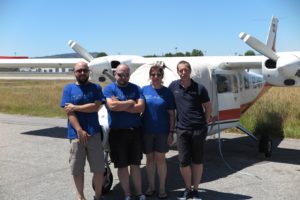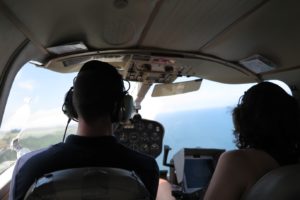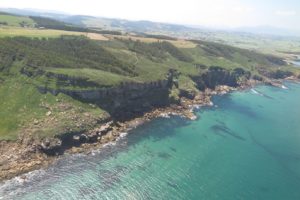Survey of Portuguese and Spanish coastal waters completed
by Hélder Araújo (Team leader)
After nearly 4,000 nautical miles flown, 6 days of surveying on effort and rewarded with almost 4,000 animals sighted, Team VII concluded the Iberian Peninsula aerial campaign!! Ten species of cetaceans were recorded (common dolphin, striped dolphin, bottlenose dolphin, Risso’s dolphin, harbour porpoise, pilot whale, Cuvier’s beaked whale, unidentified Mesoplodon, minke whale and fin whale), together with one species of marine turtle (the common turtle Caretta caretta). The final numbers were that we made 376 cetacean sightings with an estimated 3,870 individuals, and six separate sightings of common turtles.

Summer time betrayed us and the windy/foggy conditions made us the last team to fly into action. Nonetheless, team enthusiasm and expectation levels were high and on 5 July we managed our first test flight. We checked all the equipment and managed successfully to fly some “circle-backs” and the onboard data collection protocols that were new to us worked perfectly. Our flying ace, Mario Amat, caught the circle-back manoeuver at the first attempt … text book style!

After a first good day surveying the entire southern part of block A, from Cape São Vicente (the most western point of the continental Europe) to the strait of Gibraltar, we headed north.

However, with strong wind and severe fog, the only solution was to go as far north as we could. In the following two days, we covered the whole Spanish Cantabrian region from Cape Finisterrre to the border with France. We found dolphins all over the Cantabrian Sea, and also sharks … hundreds of sharks.

And then … Sunday 10 July – this wonderful day when finally we were European football “campeões”!! But then came the hangover – wind and fog again resulting in three days grounded and waiting for good weather.
By the end of last week, weather conditions were favourable once more and it was time to fly again. We managed to cover the entire west coast of Portugal in two days (14 and 15 July). This last part of our journey featured great diversity and was full of sightings of common dolphins, harbour porpoises near the shore, bottlenose dolphins, Risso’s dolphins and pilot whales.
